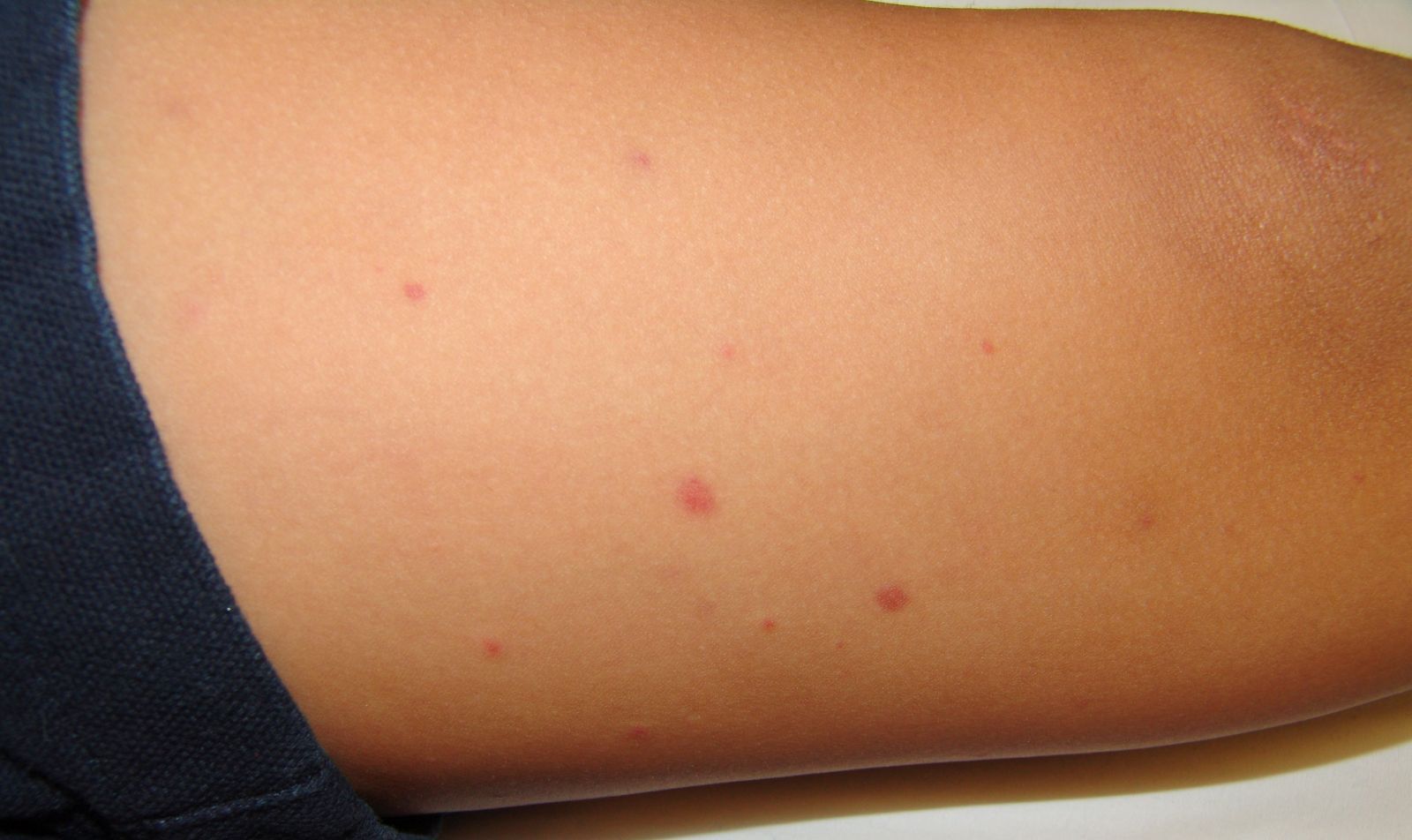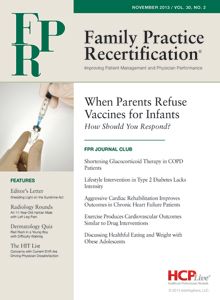Red Rash in a Young Boy with Difficulty Walking
This 6-year-old boy presents to the ER with a 2-day history of increasing pain and swelling in his right ankle. On the day of his arrival, he also developed the rash pictured here. The patient denies any other symptoms aside from his ankle and knee pain. His chest X-ray, vital signs, complete blood count (CBC), and basic chemistry panel were normal, though urinalysis showed a trace of blood.
a) Henoch-Schönlein purpura b) Idiopathic thrombocytopenic purpura
c) Juvenile rheumatoid arthritis
d) Septic arthritis
e) Thrombotic thrombocytopenic purpura

This patient has Henoch-Schönlein purpura (HSP), which is most commonly seen on the lower extremities and typified by the deep red purpuric rash in the photo (Figure 1). The boy has the usual arthralgias, as well as renal disease, which is present in one-third of cases and progresses to renal failure in approximately 1% to 3% of affected patients. However, the patient doesn’t have the abdominal pain that occurs in more than half of HSP patients.
HSP is a leukcytoclastic vasculitis involving immunoglobulin A, which causes the rash, renal disease, and gastrointestinal inflammation. Respiratory infections and strep pharyngitis have been associated with the skin disease, though its exact cause is unknown. HSP is more common in males than females, and 90% of patients are under 10 years old.1
In most cases, HSP is a self-limited disease. Prednisone has been used at daily doses of 1 to 2 mg/kg to treat the arthralgias and possibly reduce the risk of mild renal disease progressing. However, a Cochrane review of the literature showed no difference in ultimate outcomes of mild renal disease between placebo and prednisone, as well as no significant difference between supportive care and cyclophosphamide in persistent renal disease, although the number of patients studied wasn’t very large.2
In contrast to idiopathic thrombocytopenic purpura and thrombotic thrombocytopenic purpura — which by their names imply a low platelet count — HSP doesn’t present with low platelet counts, so this boy’s normal CBC rules out those diseases. Juvenile rheumatoid arthritis can be comprised of multiple arthralgias and arthritis, but it doesn’t present with a purpuric rash. A clinician would expect a child with septic arthritis to appear more ill in the form of a fever and an elevated white blood cell count, but this patient doesn’t have those symptoms or findings.
References
1. Saulsbury FT. Clinical update: Henoch-Schönlein purpura. Lancet. 2007 Mar 24;369(9566):976-8. http://www.thelancet.com/journals/lancet/article/PIIS0140-6736(07)60474-7.
2. Chartapisak W, Opastirakul S, Hodson EM, Willis NS, Craig JC. Interventions for preventing and treating kidney disease in Henoch-Schönlein purpura (HSP). Cochrane Database Syst. Rev. 2009 Jul 8;(3): CD005128.http://onlinelibrary.wiley.com/doi/10.1002/14651858.CD005128.pub2/abstract.
About the Author

Daniel Stulberg, MD, is Professor of Family and Community Medicine at the University of New Mexico. After completing his training at the University of Michigan, he worked in private practice in rural Arizona before moving into full-time teaching. Stulberg has published multiple articles and presented at many national conferences regarding skin care and treatment. He continues to practice the full spectrum of family medicine with an emphasis on dermatology and procedures.
